
The best online fitness resource you'll ever need. We filter out the BS to ensure you meet your health and fitness goals!

The best online fitness resource you'll ever need. We filter out the BS to ensure you meet your health and fitness goals!
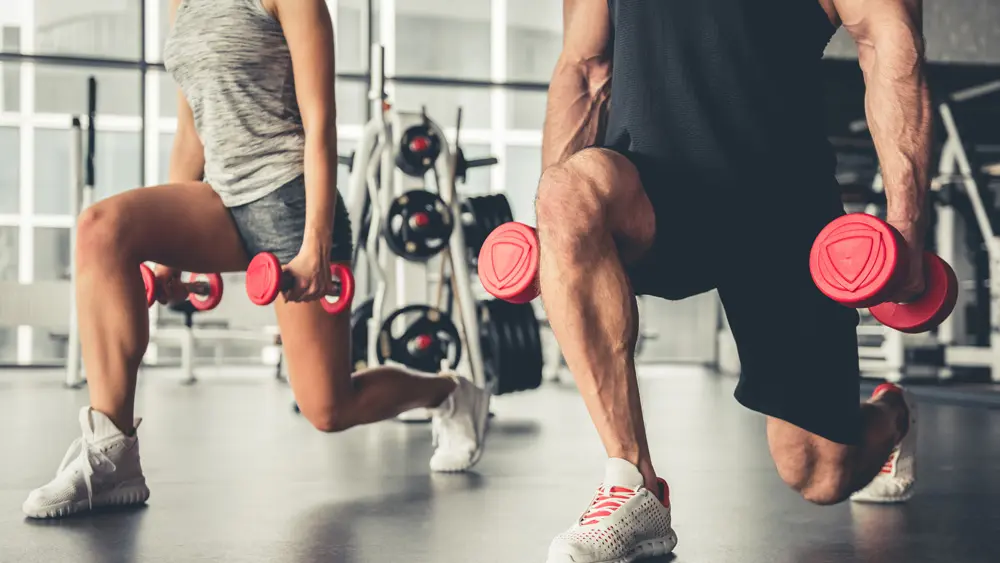
Both calisthenics and weightlifting are forms of resistance training. There is ongoing debate about which is superior to the other- perhaps unnecessary debate, though we will find this out in due course.
Resistance training (strength and hypertrophy training) places a strong counter force (resistance) on the muscles. This damages the muscles, purposefully, breaking them down so that the body is forced to repair them. This repair process is where we get muscular adaptation and hypertrophy: the muscles recover and grow bigger and stronger, essentially.
A good hypertrophy and strength program works all of your major muscle groups- your arms, legs, shoulders, chest, back, abdomen and hips- under load and through full ranges of motion.
Weight training methods such as bodybuilding, powerlifting and strongman training are some of the best-known examples of resistance training. We can also add other exercise styles that place the muscles under load through full ranges of motion like swimming and climbing.
Calisthenics cannot be left from this list.
Calisthenics is an exercise form that consists of a variety of movements that trains large muscle groups (compound movements). These exercises are often performed rhythmically and make use of minimal equipment: in fact, the vast majority are bodyweight exercises, or at least can be performed as bodyweight variations. It is an incredibly popular way of training and, for many of use during the Covid-19 lockdown, has begun to form a central, if perhaps temporary, part of our regular exercise routines.
Aside from athletic performance and specific, needed adaptation, resistance training of any kind helps you to maintain healthy musculature, which is vital for long-term health, and gives you a greater degree of strength and stamina needed to perform everyday tasks.
As we age, activities like carrying the shopping and climbing stairs become increasingly difficult, in no small part due to muscle loss (sarcopenia– or atrophy). Taking part in even low-level strength building, resistance programs will halt or reverse this decline, eliciting hypertrophy rather than atrophy. It will also help to combat musculoskeletal disorders related to ageing, bring about improved posture, and maintain healthy metabolic function, among other benefits.
Regardless of your age, however, regularly taking part in resistance training will help you to feel, look and perform better. It will bring about healthy metabolic function at any age, as your basal metabolic rate (BMR) is based in large part on your lean muscle mass. The more muscle you have, the higher your BMR, the better your metabolic function.
In part because of this improved BMR, resistance training will help you to maintain and/or improve your body composition (lean mass: total mass- your body’s proportion of lean mass, including muscle, and fat mass). When we talk of weight loss, we are not simply talking about making our total mass be less. Rather, we are talking about balancing this ratio away from fat, in favour of lean mass. This is easier when following a resistance program, for a couple of reasons.
Strength and resistance training leads to hypertrophy. This balances the ratio on one side by bringing up the total amount of lean mass your body has. The fact that it also raises your BMR, and that training itself is metabolically demanding, mean that you will metabolise fat (burn, in the vernacular) more quickly and efficiently.
There are benefits to be gained from regular resistance training over and above metabolic health and body composition. It can improve multiple markers of heart health (resting heart rate (RHR), blood pressure, cholesterol and triglycerides to name a few) and diabetes (HbA1c and insulin sensitivity). It also strengthens the bones by improving bone mineral density. This can help to protect against certain degenerative diseases like osteoporosis and arthritis and will help with reducing back pain (especially for those in sedentary, seated jobs) and symptoms of fibromyalgia.
It is worth noting all of this. It is also worth noting that these benefits will be gained from bothcalisthenics and weight training- any resistance program will give you them.
However, there is obviously more subtlety to the situation than this. There are a number of concerns to take into account when deciding which may be better suited to you, your situation, and your goals.
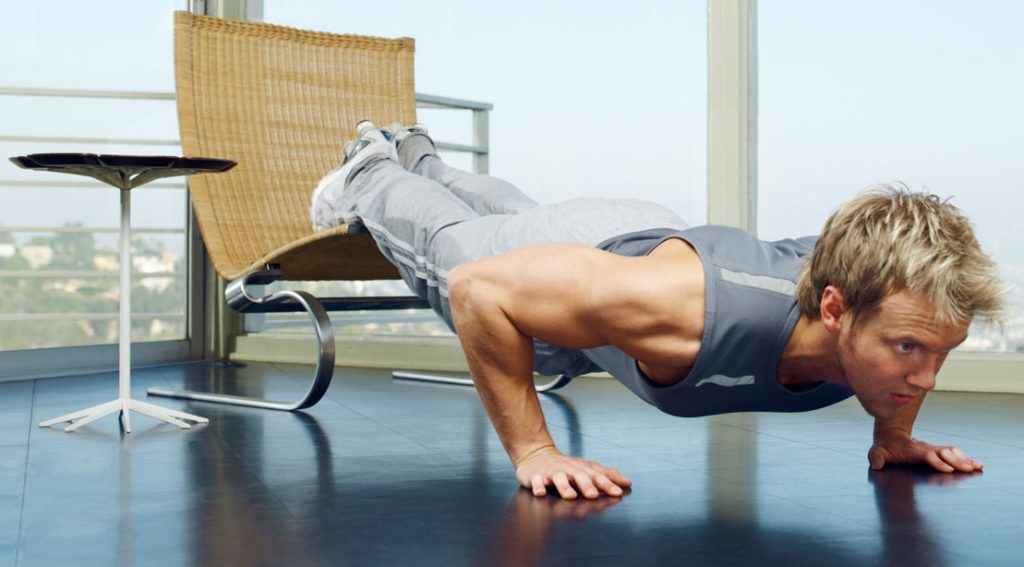
As mentioned above, a calisthenics workout will make use of the body’s own weight to create resistance. The push up is a classic, typical exercise in this vein: pushing your body away from the ground, lowering it back down, under tension, for as many reps as appropriate. Other usual suspects include squats, lunges, pull ups, box jumps, pull ups and chin ups- all compound (multi-joint, multi-muscle) exercises that use your bodyweight for resistance.
Bodyweight exercises like these are far less risky than externally loaded exercises in many cases and will be safe for most people to perform to some degree. For instance, a push up will be safer than a bench press; a squat will be safer than a leg press; a pull up will be safer than a bent over barbell row.
Aside from safety, there are a few other advantages to calisthenics. Firstly, moving your body through space is better for training proprioception and balance. It is also generally a harder stimulus than a comparative weighted movement (pull ups generally provide greater stimuli than rows, for example). And, as many of us are learning as coronavirus sweeps the world and forces us to train in our living rooms rather than hitting the gym, calisthenics requires limited- or even zero- equipment. This makes it far more affordable- rather than spending a couple of grand on a home gym, or shelling out for a gym membership month after month, simply get a pull up bar and a yoga mat for $30.
If you don’t have access to a gym or equipment for whatever reason, calisthenics may be worth bearing in mind- fitness, and specifically hypertrophy, is available to everybody.
There are plenty of calisthenics instructional videos on YouTube, and plenty of online programs that pay attention to the same basic principles of hypertrophy training that you would expect to follow in the gym, so you shouldn’t be short of inspiration and good-quality teaching.
However, there are some inevitable downsides to calisthenics that are worth bearing in mind. The first, and most major, con is that there is a harsh plateau for people who aren’t too experienced. Even for those who know a million-and-one harder variations of each exercise (and we’ll go into this below), there will likely be a ceiling to their progress. Progressive overload is a fundamental principle of training progression: simply put, you need more stimulus this week than you did last week in order to grow. If the only stimulus is your bodyweight, you can’t keep adding resistance.
Compare this to the gym. If your bench press becomes too easy, add a couple of plates.
Of course, you can add a weight vest, but then we’re straying out of the realms of calisthenics and into- you guessed it- weight training.
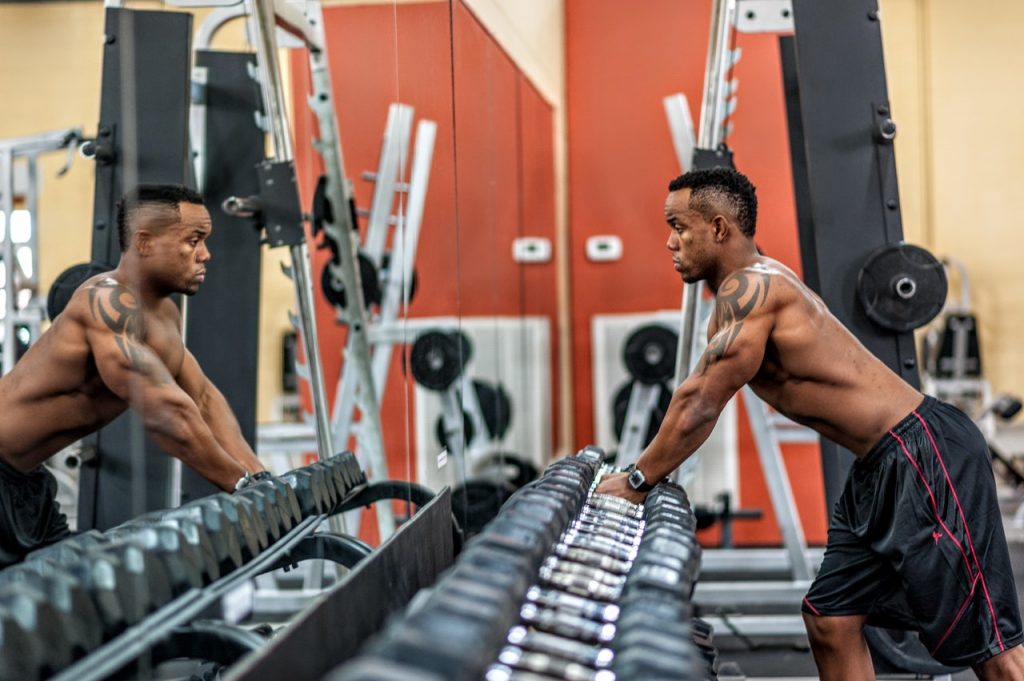
Weight training can mean a few things- or a combination of a few things, as is usually the case. It will often be a mixture of free weights (barbells, dumbbells, kettlebells, bands, and sometimes specialised equipment of the kind commonly found in strongman) and machines (pec decks, cable pulleys and so forth). It will also mean a mixture of heavy weights (deadlifts at three rep sets, bench pressing a single) and lighter weights (hitting 10-14 reps for a real burn), and single- (lateral raises, bicep curls) and multi-jointed, compound exercises (squats, bench presses.)
These will all be available and accessible at any gym. Alternatively, much of the kit can be bought for home (though it can get pricey to kit your garage gym out with everything you would ever need). It’s always worth going to a gym first, perhaps chatting to the trainers, maybe taking a few personal training sessions or group classes, so that you learn the basics before going solo.
Weight training has many benefits.
As opposed to calisthenics, there is no ceiling other than your natural one- you can keep adding weight until your body gives out (though you should only go flat out every so often), meaning that progressive overload can be properly honoured.
It can also vary in intensity, meaning you can manipulate rep ranges, as above, in a way you cannot so easily do with bodyweight training. For instance, if you need a hypertrophy phase, bring your bench weight down and hit the high reps. Then, when you want a heavy phase, pile on the plates for sets of three. This works across all exercises and makes for great variation in muscular stimulation.
Aside from this, there are some benefits to actually attending the gym. Of course, you can perform calisthenics at the gym, but this runs counter to some of the aforementioned benefits of bodyweight training.
At the gym (at least, at a good gym), you will meet like-minded people, usually eager to share knowledge, usually eager to urge you to better yourself and to engage in some light-hearted competition. These will all bring about results far more quickly as you push yourself harder and train more effectively. The mental health benefits of exercise in general, and specifically involving yourself in a community like this, cannot be understated- the inclusivity of a good gym, the sense of camaraderie and belonging, and the discipline of turning up to a dedicated workspace will all make your life a little happier.
Then, of course, there are the downside. It is harder to learn to lift free weights properly than it is to learn most bodyweight exercises. If you forego free weights and work machines, you will get nothing like the kind of stimulation you would otherwise enjoy. Then, it is also easier to injure yourself as you move external weights around your body (or, as any decent trainer will tell you to do, move your body around the weights). Going too heavy can grind in the joints, or even cause injury, and perforated and pulled muscles are pretty normal in any lifting discipline.
There is also the financial aspect of weightlifting. As mentioned above, you can buy all the equipment you need to kit out a garage gym, but we will be talking thousands of dollars. You can go to the gym, as most people do, but even budget places can set you back thirty or forty dollars per month, whilst more upmarket facilities can easily triple this.
This isn’t a deal breaker, and many people are willing to take this hit for the sake of their health and fitness, but it is worth bearing in mind when trying to decide between calisthenics and weights.
So, what does this all mean? How does one stack against the other? As mentioned above, each has its own merits, and each has its own pitfalls, so let’s run through a quick comparison to help you decide between them.
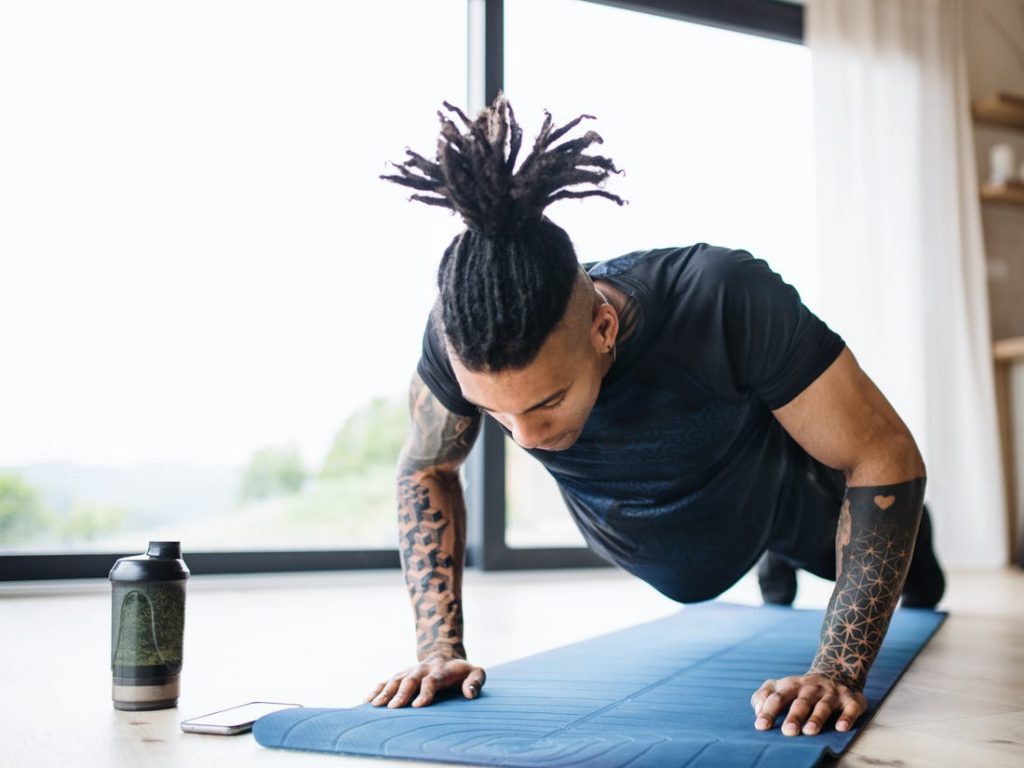
Calisthenics and weight training are actually quite evenly matched with regards eliciting progression through the upper body. Most people will find a couple of push ups and a floppy chin up easy enough to do. However, it takes a lot of training to get up to a hundred push ups and even just a dozen strict pull ups with good form. So, although you can’t pile on the weight, the plateau mentioned above is a long time coming for the arms, chest, shoulders and back.
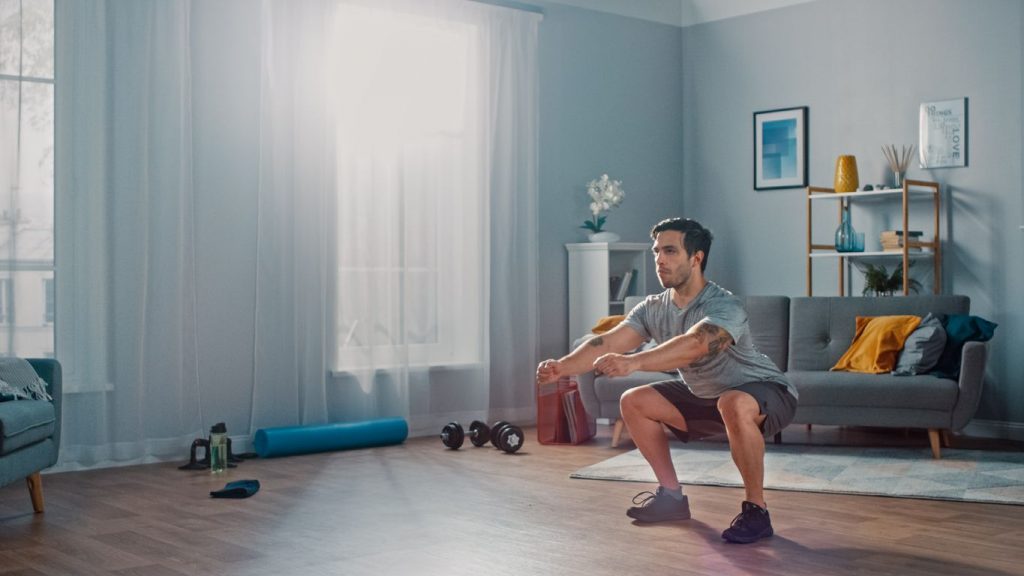
The same cannot be said for the lower body. It’s fairly easy to get to a fair number of bodyweight squats, box jumps and walking lunges: beginners will be able to make sets of twenty of each before long. The plateau comes early, and there are fewer progressions to make things harder than with the upper body.
This is where you really need a barbell or leg press with plenty of plates.
Much of this discussion has been on hypertrophy, for which calisthenics are great. You can absolutely get shredded doing nothing but bodyweight work. However, strength training is a little bit different.
Of course, any serious calisthenics practitioner will be what common parlance might dub ‘strong.’ Any gymnast will show you this. However, when it comes to actual strength gains, as defined in the lifting community, you need to be able to lift gradually more and more weight through compound movements, in relatively low rep ranges (3 reps of your heavy squats should be able to blow you out, and no amount of push ups are going to fully prepare you for a decent 1 rep max on the bench.)
Once more, you need to be able to pack a lot of resistance into each rep, which means using a barbell or machine with plenty of plates or a large weight stack.
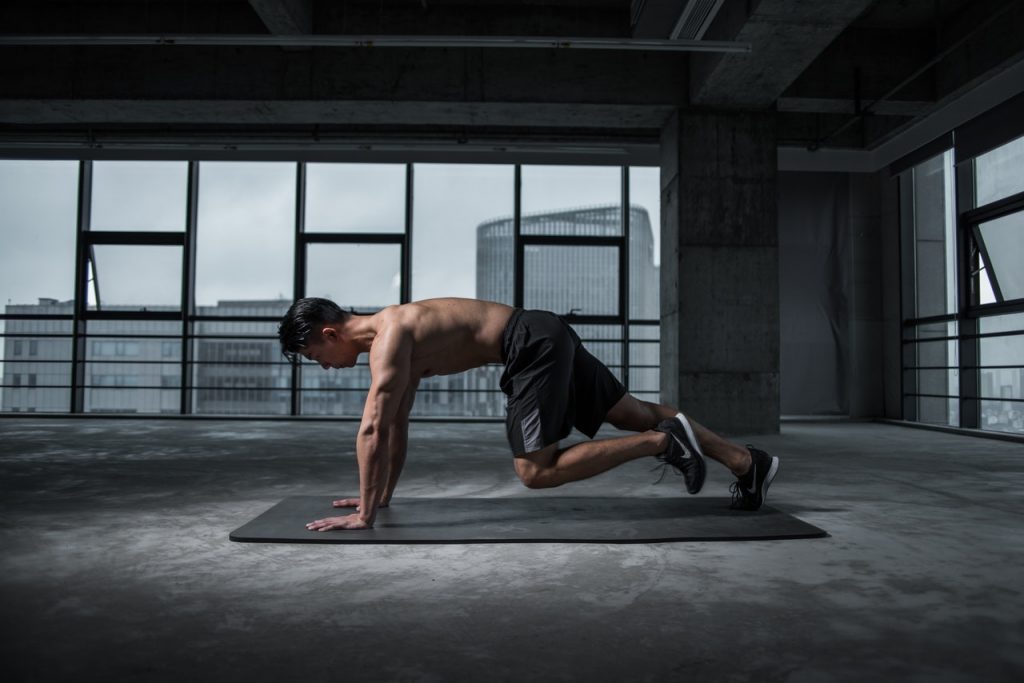
This feels a little dirty. ‘Functional’ fitness is bandied about a lot, though really, it’s quite a vacuous term. All fitness training is functional if it serves your purpose and gets you better at what you need to be good at.
Standing on one leg on a Bosu ball is no more functional than performing heavy squats to grow your legs big and strong- if anything, it’s quite a lot less useful in most situations, and is therefore less functional.
However, calisthenics enthusiasts are likely to fall back on functionality when arguing in favour of their methods. Squatting fifty times with just your bodyweight is more functional than deadlifting twice your bodyweight; box jumps are more functional than the leg press; plyometric push ups are more functional than the bench press.
This isn’t true. These calisthenic moves are definitely good for you and are no more or less inherently functional than any weighted compound movement. However, pick your purpose: if you want to be lean and explosive, go with calisthenics; if you want to grow and be strong, go with weights. This is functional fitness.
This is where we get to the real core of the issue. Which will improve the other more?
Herein lies the argument. Each has fantastic carryover to the other. If you want a heavy bench press, you need to build muscle, which means running high-rep hypertrophy phases, and tagging high-rep assistance work in even after heavy lifts. There are few things better for building up the chest, triceps and anterior delts (the prime movers in a bench press) than push ups and dips.
Equally, if you want to improve your explosive box jump, you need to build up the power in your glutes and quads. This means going heavy through the lower body, allowing your low-rep squat work to carry over into your high rep explosivity.
Of course, not all individual exercise carryover that much. However, when we talk about explosive compound movements, calisthenics and weight training work incredibly harmoniously.
This leads us neatly into our conclusion: which is the winner between the two. Predictably, given what we’ve seen above, neither wins.
This is in part because the one that is best for an individual is the one that most closely aligns to their goals. Choosing between calisthenics and weights is incredibly situation dependent.
In addition, the best thing to do when considering weightlifting and calisthenics is to do both. Each will make you stronger, fitter, more explosive and more muscle-bound. Don’t pick weightlifting sessions over calisthenics sessions, even: mix them up.
If you’re a powerlifter, hit your heavy compound movements first, then use good-quality bodyweight moves as assistance work and finishers. For example, following your heavy squats, work in a HIIT protocol with a combination of squat jumps, box jumps and burpees. Following a bench session, schedule a superset of dips and pullups to further work your prime movers, and to work up your antagonists through your back and biceps.
If you favour bodyweight work, but your dips and pull ups are becoming too easy, feel free to bring some weights into the equation. Strap a weighted vest on, hold a dumbbell between your feet, or chain a plate around your waist. If you want to work up to a harder push up variation, or improve your box jump, as mentioned above, lift weights that stimulate the relevant muscles. Bench presses and low-bar squats, respectively, will bring growth and power to your arms and legs.